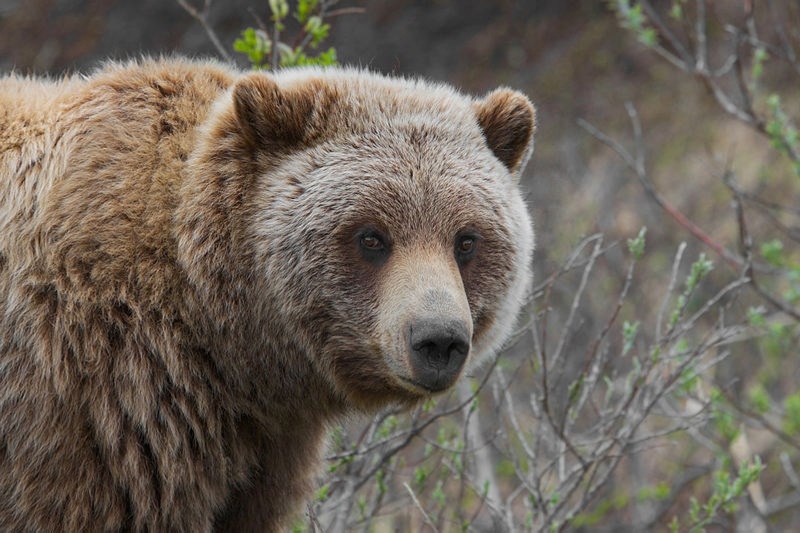As the popular season for backcountry activities begins, one teacher is making sure her students are bear-aware and with the selfie craze over recent years, those working with parks and wildlife in the province say it’s never been more important.
Esther Seiben, the outdoor education facilitator at Cochrane High School, holds a two-session program over two weeks for her students in an effort to educate them about how to be safe in bear territory.
The program, taught at the start of the high school term in Grade 9, puts a specific focus on grizzly bear sustainability. The point Seiben hopes to drive home – keeping as much distance as possible from the animals.
“If you want them to be around for the next 100 years, then we need to stay away from them because the less contact with bears humans have, the better it is for our bear population,” Seiben said. “If they notice we’re in the area, we’re too close. That is one of the biggest components of my program.”
Seiben said while she teaches the outdoor education program, she wants kids to learn about helping grizzly bears sustain their habitats and their populations.
She noted that from her perspective, selfies with wild animals seem to be a tourist problem more than a Canadian one, but added teaching kids about sustainability will keep both bears and people protected.
“The mountains are there and the mountains have bears, and if we educate kids how to handle that situation, I think we’re doing our part,” she said.
Jaclyn Angotti, an educator with the southern Alberta chapter of Canadian Parks And Wildlife Society (CPAWS), explained bears actually tend to avoid conflict and are not as naturally aggressive as perceived, though they are still dangerous.
“Although it’s very very rare to have an actual aggressive encounter where a human gets injured, we don’t want to push the bear to have that happen.”
Angotti said conversations with teens about bears and safety has become increasingly important with the availability of cell phones and social media, where teens want to get a video of themselves with wild animals.
This habituates the bears and creates what is termed “problem bears.” These bears are given three strikes. After the second strike, they are tranquillized and relocated but on the third, they are euthanized.
“Though the term is problem bear, I tend to think of it as problem human. If teens are trying to get selfies with bears, they need to think about that they could actually be causing one of those strikes and leading to the death of that bear in the future.”
Brendan Cox, communications officer with Alberta Fish and Wildlife (AFW), said habituating the bear with repetitive contact with humans also applies to stopping close by in a car for a look or picture.
“When you see a bear, the safest and most responsible thing to do is not to take pictures, but to leave the way you came without calling attention to yourself. Retreat slowly while keeping your eye on the bear, never run, give the bear as much space as you can, and do not approach it. Do not stop.”
Cox notes this is especially important since, while black bear populations are healthy, grizzly bears are on the decline – about 800 remain in the province – and are classed as a threatened species in Alberta.




